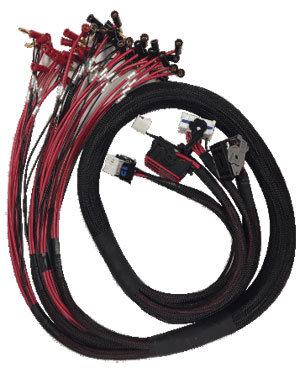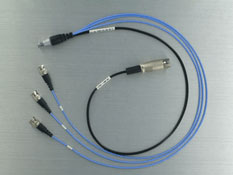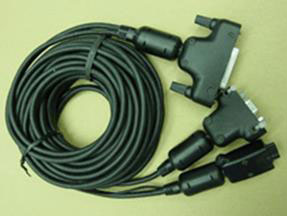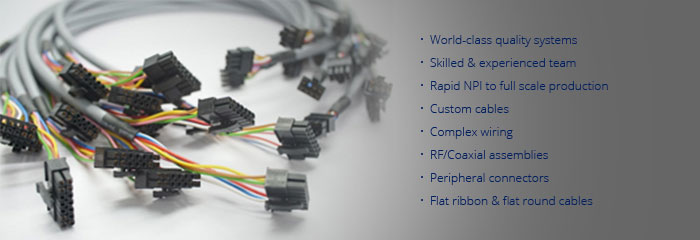
Cable Assembly vs. Wire Harness
Before getting into the fighting differences of a cable assembly vs. wire harness, it’s important to note the difference between wire and cable, since these terms are also used interchangeably despite being very different products. Essentially, a wire is a strand of material that conducts electricity, such as aluminum or copper. A cable, by contrast, is two or more wires that run together. They’re often bonded or braided together, which is why you see cables that look like bunches of intertwined wires.
The Wire Harness
 At their most basic, wire harnesses are a simple exterior sheath that covers some wires or cables. It’s usually made of thermoplastic or thermoset material which helps protect the wires from their environment. For the most part, wire harnesses bundle up cables and wires that are already protected by their own exterior sheaths. That means you could open up a wire harness and see multiple cables with their own coverings, but they’re all in a single wire harness.
At their most basic, wire harnesses are a simple exterior sheath that covers some wires or cables. It’s usually made of thermoplastic or thermoset material which helps protect the wires from their environment. For the most part, wire harnesses bundle up cables and wires that are already protected by their own exterior sheaths. That means you could open up a wire harness and see multiple cables with their own coverings, but they’re all in a single wire harness.
Wire harnesses are a low-cost electrical solution that’s best for keeping electrical systems organized. By bundling wires and cables together, engineers and electrical contractors can keep their wiring systems organized. Since wire harnesses are often a low cost organizational tool, they aren’t generally able to protect the wires inside from constant friction, temperature swings, or other factors that could cause damage to the wires inside the harness.
The Cable Assembly
 Cable assemblies are a group of wires or cables covered by a much more intensive exterior product. In general, they are made from heavy-duty materials, including shrink-wrapped thermoplastic, thermoplastic rubber, or vinyl. These assemblies serve a similar function to wire harnesses, including keeping wires and cables organized, but are designed for entirely different environments.
Cable assemblies are a group of wires or cables covered by a much more intensive exterior product. In general, they are made from heavy-duty materials, including shrink-wrapped thermoplastic, thermoplastic rubber, or vinyl. These assemblies serve a similar function to wire harnesses, including keeping wires and cables organized, but are designed for entirely different environments.
Cable assemblies are designed for specific environmental factors, including the size of the area where it’s being used and the types of environmental factors it’s likely to encounter. For this reason, cable assemblies can come in many different shapes and sizes, and are built to shield the interior wires and cables from heat, friction, moisture, abrasion, compression, and other hazards.
So what’s the difference between wire harnesses and cable assemblies? Well, each is used in different environments. Wire harnesses offer a low-cost solution for keeping wires organized, while cable assemblies keep all of the products safe in the most extreme circumstances.
Custom Cable & Wire Harness Assembly
As a premiere electronics manufacturer, Fineline Circuits & Technology offers a wide range of cost-effective, high-performance solutions for cable and wire harness assemblies. We design, develop, and assemble complex harness solutions using advanced production techniques. We deliver reliable custom cable and harness assembly utilized in critical applications worldwide.
Trusted Assembly Solutions
We utilize semi-automated crimping machines and continuity testing systems to ensure that every cable assembly we deliver meets the highest standards of workmanship and quality. Our custom cable assemblies are an integral part of our clients’ end-products.

Customized Cable and Wiring Harness Assembly Highlights
Fineline Circuits & Technology focuses on delivering quality products and services to help clients gain a lead in their respective markets. The following highlights validate Fineline Circuits & Technology’s success and popularity with clients.
- In-depth industry knowledge and expertise in cabling and wire harness solutions
- NPI to full-scale production
- Strong supply chain partnerships
- Quality systems and regulatory certifications
- Competitive costs and lower logistics
Whether it is a simple wiring harness assembly, or customized wire harnesses and cable assemblies, Fineline Circuits & Technology can provide precise solutions.

